#gaulish pagan
Text
My Drive Resource Libraries
Feel free to download, share, etc. I found most everything through open access journals, JSTOR, Anna's Archive, sci-hub, pdfs shared on other sns, etc.
Greek Polytheism & Hellenism
Roman & Italic Polytheism
Gaulish & Gallo-Roman Polytheism
Celtiberian Polytheism
#hellenism#helpol#cultus deorum#greek polytheism#polytheism#roman polytheism#gaulpol#gaulish polytheism#gaulish pagan#celtiberian
430 notes
·
View notes
Text
there's something so beautiful and so tragic about crying out to the gods and any gods that would help, because you're own kind failed you, and yet, those deity's have more humanity then people, so they help you when others wont
#paganism#satan#satanism#theistic satanism#religion#norse mythology#ave satanas#theistic satanist#fenrir#devil#hellenic paganism#hellenism#gaulish pagan#gaulish paganism#gaulish#norse gods#norse heathen#celtic polytheism#celtic paganism#celtic witchcraft#celtic mythology#celtic
48 notes
·
View notes
Text

Credits to the wonderful people of NorthMyth on Etsy for their impeccable craftsmanship and speedy delivery. Support them, if you can. Ukrainian artists deserve our aid!
#statues#statuettes#woodcarving#woodcarvers#gods#pagan#pagan gods#gaulish pagan#roman gods#Gaulish#Roman#roman paganism#gaulish polytheism#roman polytheism#gallo roman#Gaul#Moccus#cernunnos#Epona#Sulis#Taranis#Janus#Ukrainian#ukrainian art#ukrainian artists#polytheism#paganism#Celtic#Celt paganism#celtic polytheism
140 notes
·
View notes
Text
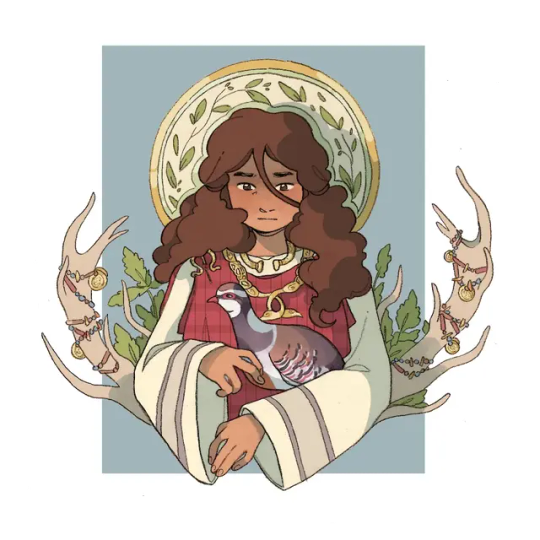
The child and the partridge 🌿
#illustration#my art#artwork#traditional art#digital art#pencil drawing#celtic#fantasy#gaulish#gaulish pagan#artists on tumblr#my ocs
30 notes
·
View notes
Text
Ode to Artio
O’ Great Mother Bear,
Paws firmed against the soil,
head held high,
body bold and strong.
To you I hail,
give my thanks,
to guide my dreams through the night.
O’ Artio,
Great Mother of All,
I thank you for your guidance,
guiding my footfalls on the path I must take.
To you I raise a horn,
and drink in toast,
for without your strength,
I would fall.
21 notes
·
View notes
Text

Just because it could be significant, as far as we know we may be the first fully Gaulish Polytheist couple in centuries. @abonigena
14 notes
·
View notes
Text

Artio, the celtic bear goddess. Available as print.
She was worshipped by the Helvetii and Treveri, borth germanic tribes.
Proof of her worship has been found in a gorge in Weilerbach, Germany in form of an inscription ("Artioni Biber") and in Bern, Switzerland where archeologists found a small bronze sculpture of her. That sculpture was the inspiration for my own interpretation
❖ Etsy Shop
❖ Instagram
❖ Facebook
#celtic#celtic goddess#pagan community#celtic wicca#pagan witch#paganism#paganart#modern paganism#european mythology#goddess#witch#celtic folklore#celtic paganism#germanic#germania#gaulish pagan#gaulish gods#celtic mythology#gaulish polytheism#celtic polytheism#bear#artio#pagan women#pagan
27 notes
·
View notes
Text

Diana and Roman-Celtic Syncretism
═══════ ◖◍◗ ═══════
introduction
[images in this post have been added for aesthetic purpose only and do not contain relevant text. any relevant images will be described using image ID]
As a witch, I make it my aim to know the Gods as well as I possibly can, to explore their many epithets, counterparts and aspects. When I first started, I initially followed the Hellenic Pantheon, this then expanded into their Roman counterparts, and by extension of this, I explored not only the original Celtic Polytheism (in particular the Tuatha De Dannann, the Irish Gods, but the Gaulish epithets of the Roman Gods.
Very recently, I came back into contact with Diana-Artemisa. I had honoured her previously, but I was interested in reconnecting to the earth and to the forest, and she was there for me. This initiated my research into today's topic, Roman-Celtic syncretism of the Goddess Diana.
A few notes before we get started. Today I am focusing on the Gaulish-Celtic regions, so I will refer to the Gauls, Gaulish worship and language accordingly. I am also referring to Diana-Artemisa as 'Diana' as today we are specifically looking at Roman-Gaulish Syncretism, so she is being referred to as her Roman face.
Hope you enjoy the post!
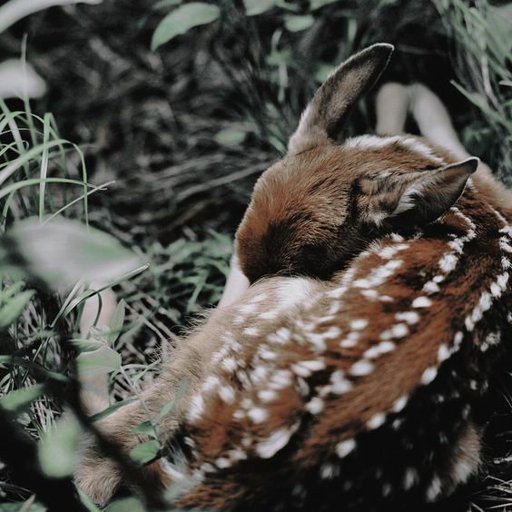
═══════ ◖◍◗ ═══════
religious syncretism
Religious Syncretism is a topic that has been discussed in this community before, and has been done so in a more sophisticated manner, and I thoroughly recommend further research on the topic outside of my post.
To put it simply, religious syncretism is when multiple religions or aspects of a religion are in contact and begin to mix or combine. This often happens between regions that are close to one another geographically, through trade routes, regular communication through regions, but it can also take place as a result of war, imperialism or colonisation, which is important historical nuance to consider when approaching this subject.
In terms of Roman religion, that which we are discussing today, Roman society had a tendency towards Syncretism. The connection between Greek and Roman religion for example is often discussed, the Romans identifying their own Gods, sometimes seen as counterparts of the Hellenic Gods, by similar powers.
Religious Syncretism also happened between Roman and Gaulish religions, Gallo-Roman religion was a result of occupation from the ruling Roman empire. While the Roman's did not necessarily impose their religion and gods (though they did impose themselves in other ways such as taking over the land through imperialist means), Roman-Gaulish religion is characterised by how the Gauls adopted Roman language, culture and beliefs.
With that established...

═══════ ◖◍◗ ═══════
Gaulish Worship of Diana
Diana is primarily known as a Virgin Goddess, a Goddess of the Hunt, protector of women, Goddess of both the Moon and the Forest, and in Gaulish worship it is clear that she was seen as relatively important and that her worshippers were faithful to her. Diana became associated, or seen as one and the same as a few pre-existing goddesses, which i will discuss further in detail in a few moments.
In Gaul, Diana was frequently attributed the Epithet "Augusta", 'regina', meaning Queen. She was often also referred to as being holy, which was not used as a descriptor for all deities at the time. Across Gaul, there were something of 85 inscriptions written in the name of Diana, while 13 also appeared in Great Briton, Diana's worship while often seen specifically in Gaul also extended to other Celtic regions such as Briton.
While it cannot be argued that Diana is the most significant deity within Gaul, her worship and importance cannot be denied, the label of her as a queen indicates very clearly that Diana was revered. The Gauls worshiped Diana much as they worshiped other deities, honouring the Goddess within the Cult regulations of the Temple of Aventine (the temple being significant in Diana's association as a protector of Refugees). They also notably celebrated her on the day of Nemoralia.
Part of the Gaul's association with Diana comes from Diana of Esphesus, a sanctuary dedicated to the goddess within Asia Minor, which was well known for it's cults dedicated to 'mother goddesses'. The Artemision was a place in which Diana-Artemisa was worshiped in extraordinary proportion, which extended to regions outside including Phœcia. It was when that the Phœcians arrived on a southern coast of Gaul (Marseille) escaping exile that a new cult of Diana of Esphesus was established within their new colony, this implying that Diana was the first deity of Hellenistic origin that the Gauls may have interacted with (though this cannot be confirmed because of natural syncretism on trading routes etc). This epithet of Diana came to be associated with the protection of foreigners, refugees and - as an extension, sharing religion across cultures.

═══════ ◖◍◗ ═══════
Diana Abnoba
Diana as a deity is notable for being associated and considered "one" with other deities and beliefs, an example being her Triple Goddess form as Diana-Luna-Hecate, an avatar of Diana in which herself, Dea-Luna (a distinct Goddess of the moon, sister to Sol) and Hecate.
Diana queen of the groves, thou who in solitude lovest thy mountain-haunts,
and who upon the solitary mountains art alone held holy,
change for the better these dark, ill-omened threats.
O great goddess of the woods and groves,
bright orb of heaven, glory of the night,
by whose changing beams the universe shines clear,
O three-formed Hecate, lo, thou art at hand, favouring our undertaking.”
—Seneca, Phædra, ll. 406-412 (trans. Miller).
These three forms may correspond each goddess to a particular phase of the moon, but most interestingly to me it associates Diana with the practice of magic in Gaul, for while Hecate was known she was never invoked by name. Hecate; as a goddess of witchcraft and sometimes seen by the modern witch as being associated with Faeries (later Roman scripture citing her as the Queen of Faeries), it also connects Diana to these ideas.
With this established, what I found most interesting about Diana-Abnoba is her connection to water.
Diana-Abnoba, or simply Abnoba is often known as Diana's face in the black forest region. She is a goddess of Nature, mountains and the hunt, and her most prominent symbol is the black forest itself, the mountain range in Baden-Würtemburg, a mountain within the area owing it's name, apparently, to her.
The goddess was also well known as being a deity of river and forest, her influence was massive, and as a water deity many rivers in England were named in her honour. Revered as a Patroness and Protector of Springs, rivers, woods wild animals and children, when translated her name can mean 'She of River Wetness'.
Even at a first glance, Abnoba's associations as a goddess of forest, hunt, wildlife and childbirth invoke the image of Diana. However she is very often seen as being the Epithet of Diana worshiped in the Black Foret Region, an Altar in BadenWeiler Germany (at the Roman Baths) associates the two by name.

[Image I.D - a photo of a stone shrine in front of a brick wall. The shrine reads "Dianae Abnobæ Msennvs Frontosl Ex Voto". End I.D]
Diana's worship across the black forest region was widespread, with multiple altars being inscribed both to her and Abnoba.
Prior to discovering this I was entirely unaware of Diana-Artemisa having any associations with water, but it seems the epithet Abnoba ties her very close to them, particularly rivers and springs. With Diana's associations with life, it can be fair to assume her association with water also comes from it's life giving qualities, particularly her being a patroness of springs and rivers. To me, Diana-Abnoba is an important epithet in my craft as a water witch, and I hope to communicate with her more in future.

═══════ ◖◍◗ ═══════
Diana Arduinna
Arduinna is a Gaulish Woodland Goddess whom is associated with Wild nature, mountains, rivers, forests and hunting, much like Diana and Diana-Abnoba. As a goddess, she was both seen as a hunter of the forest and their protector of the Flora and Fauna.
Widely worshipped around the regions of the Ardennes, she is also associated with the forest of Arden in England. I find it interesting that while in this post I have looked mostly at Gaulish Worship, much of my research has come back to England, where I am from.
Arduinna was often depicted as a young woman surrounded by nature, riding a Boar and holding a spear (this is one notable difference between Diana and Arduinna, for Diana is more associated with the Bow and Arrow). The image of her upon a wild boar also symbolises her power and strength, for that is what boars were seen as, as well as being vital for life as a food source.
The only surviving depiction of Arduinna is a bronze Gallo-Roman statue of a woman riding a boar holding a dagger. However, the statue bears no inscription, and was simply assumed to be Arduinna in the 19th century. Diana and Arduinna are often identified with one another, a similar bronze statue existing in the British Museum from the collection of Richard Payne Knight is traditionally labelled as "Diana", their associations being tied in art dedicated to them. Interestingly, the statues are both headless.
Historically, Arduinna and Diana have been associated together and have been written about in Gregory of Tours account. In which, a preacher known as Walfroy preached to the population of Villers-devent-Orval in Ardennes as an attempt to discourage them from worshiping the goddess Diana. According to Gregory of Tour's writing, there was a large stone statue of Diana of which people would make their dedications to her. Unfortunately, the statue was pulled down and demolished by the preacher and his followers. Here we can see that Diana and Arduinna are identified historically in the Ardennes region. It also may explain why so few depictions of Diana-Arduinna remain, due to demolishment and interference from the church.

═══════ ◖◍◗ ═══════
Bibliography
http://www.deomercurio.be/en/dianae.html#abnobae
https://symbolsage.com/nature-goddesses-names/
Green, Gods of the Celts, 1986,
Dictionary of Gaulish Language
https://artsandculture.google.com/entity/arduinna
/m0lt0l?hl=en
https://www.britannica.com/topic/Diana-Roman-religion
https://www.oxfordbibliographies.com/view/document/obo-9780195389661/obo-9780195389661-0059.xml
https://www.encyclopedia.com/religion/encyclopedias-almanacs-transcripts-and-maps/greco-roman-religion-and-philosophy
The British Museum Online
#witch#witchcraft#pagan#pagan witch#roman pagan#roman religion#celtic pagan#gaulish roman paganism#gallo roman religion#gaulish polytheism#gaulish pagan#diana#diana goddess#artemis#abnoba#witchblr#paganism#pagans of tumblr
94 notes
·
View notes
Text
Nantosuelta





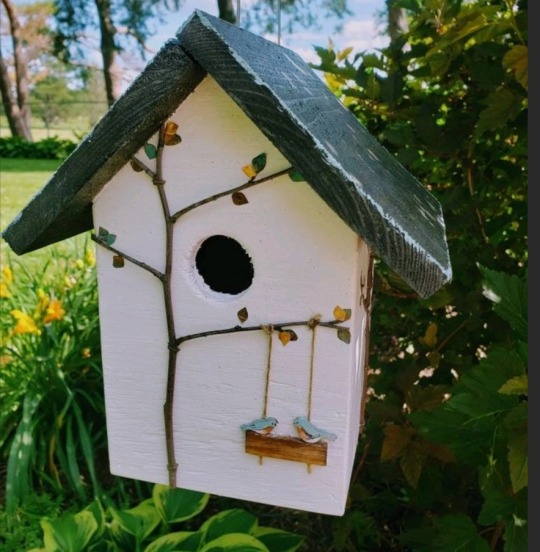


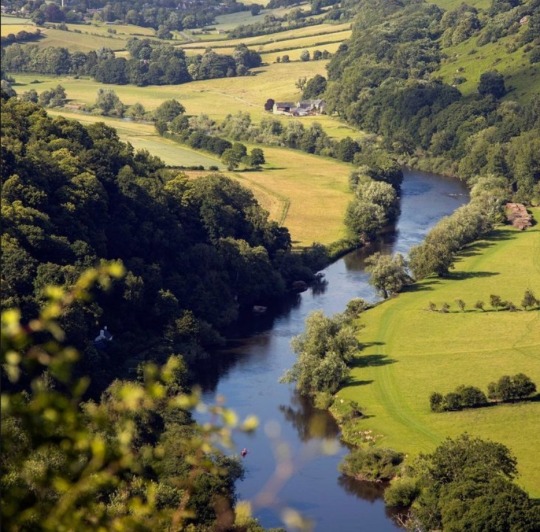
Gaulish Goddess of: mead, dwelling places, abundance, fertility, wisdom, and some solar qualities. She may have ties to the Underworld as well. Her name can be translated as "Sun-drenched Valley" or "Meandering Brook" or possibly "Who Makes the Valley Bloom."
#polytheism#polytheist#deities#pagan#deity#paganism#roman paganism#gaulish polytheism#Nantosuelta#Gualpol#gaulish#gaulish pagan#celtic polytheism#celtic paganism#Celtic Pagan#goddess#moodboard#Celtic Mythology#devotional moodboard
63 notes
·
View notes
Text
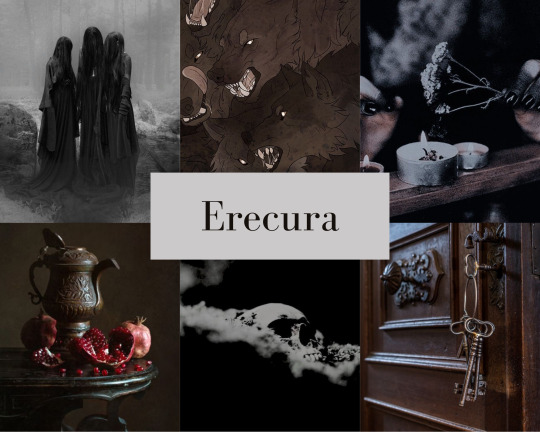



I am back for the Gaulish gods and goddesses - part 2 🤍🌿 !
#taranis#erecura#ogmios#ogma#rosmerta#demeter#proserpine#gaulish polytheism#gaulish pagan#gaulish paganism#druidry#spirituality#cernunnos#pagan
47 notes
·
View notes
Link
A playlist of the presentations at the past weekend’s Gaulish convention!
Myth is Not Religion by Aliakai
Gaulish Runas System from Nemeton Dumnantu
Divine Pairings in Gaulish Polytheism by Nertatis
Frankish Polytheism/Heathenry presentation by the TFA
Abnoda Gaulish/Celtic Goddess of the Wilds by Tricunos
Ritual for Gallo-Roman Mercuralia by Viducos/Deomercurios
Stone age cosmology (neolithic origin for cernunnos??) by Beroki
Secrets of the Rhaetians (IRON AGE ALPS SUN WORSHIPPERS) by Renotauros
Travel Altars & Con wrap up with Reno again
#aliakai#runes#runas#gaulish#Gaulish Polytheist#Gaulish Polytheism#gaulish pagan#frankish#frankish heathenry#heathenry#abnoba#diana#gallo-roman#mercury#mercuarlia#cernunnos#cerunnos*#rhaetians#sun worship#altars#paganism#pagan#polytheism#convention#sirona#taranis#taranos#neopagan#neopaganism#myths
24 notes
·
View notes
Text
Une Rose pour Épona
(Traduction d'Eluveitie)
« Sens-tu ces épines
que goûtent mon sang,
mes larmes, et nos souvenirs mourants?
As-tu abandonné vos fidèles,
même qu'ils crient, en agonie, ton nom?
Je me tiens avant de toi
ici, je t'offre
une rose cramoisie,
les mains qui se tenaient en espoir
étant de force écartées.
Étais-tu là?
Les cieux vont tomber sur nous ici,
pendant que ton nom sanctifié vieillit,
je te rendre tout mon sang et tout que je suis,
en croyant que c'est devenu futile.
Dans ton nemeton de pierres grises
je n'entends rien, je deviens froid.
Mes frères chevauchent
parmi ta chasse sauvage,
des fantômes oubliés...
Es-tu là?
Mère Épona, ton pays reste ensanglanté;
on sera tués ensemble,
témoigne alors l'anéantissement glorieux,
en cet jour, on chevauche à ton royaume... »
0 notes
Text
Cernunnos e offering

#cernunnos deity#cernunnos god#Cernunnos#celtic polytheism#celtic mythology#celtic paganism#celtic witchcraft#celtic#paganism#gaulish paganism#gaulish#gaulish polytheism#gaulish pagan
16 notes
·
View notes
Text



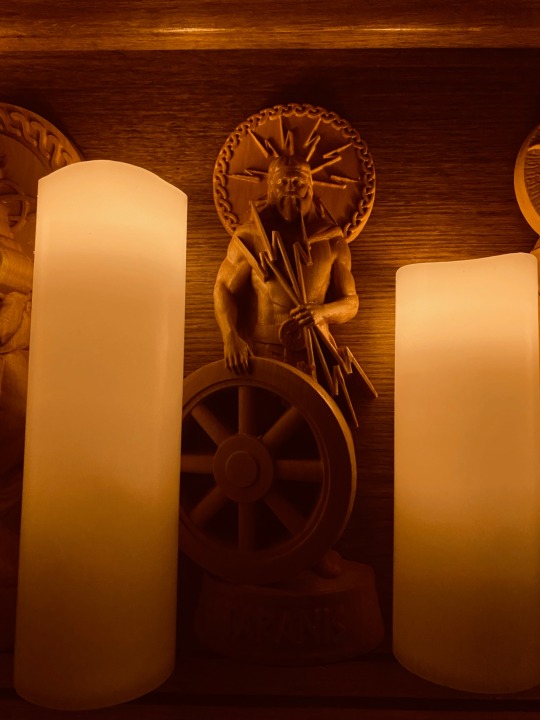



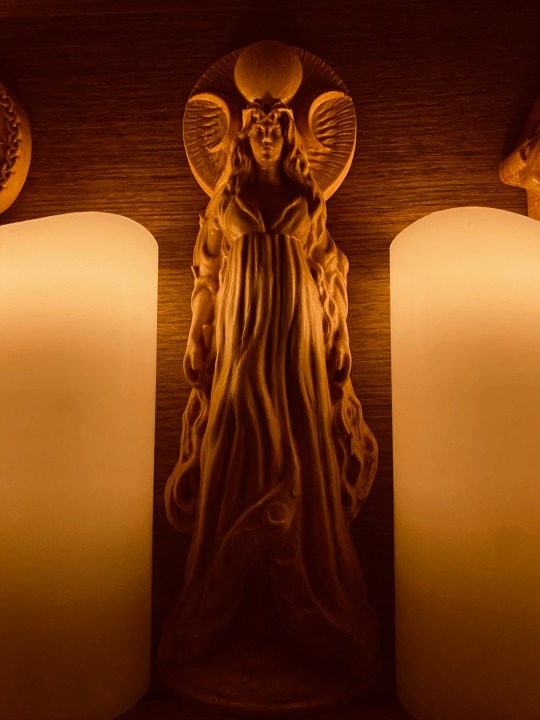
Statues by NorthMyth on Etsy
#Gods#deities#paganism#polytheism#roman#Gaul#gaulish pagan#gallo roman#statues#wooden statues#statuettes#woodcarving#cernunnos#Taranis#Epona#Janus#Sulis#sulis minerva#Moccus#the goddess#art#spirituality#celtic#altar#shrine#candles
18 notes
·
View notes
Text
Funny how, after many months of very low spiritual energy, I'm back at the beginning of my path, were I was curious about the territory(ies, I've moved a lot) were I've lived and the history behind it.
For all my life I've lived in liminal places, little villages on the border of two other county and let me tell you: it'sh hilarious to retrace my steps by studying those things.
Like... I just found out to have been Twice! On a place were the temple of a beloved God of the Celts who migrated in Italy was, and I've found again the names of the Gods and Goddesses mostly likely to be patrons and matrons of the places around me!
I'm in need to expand my studies to etruscan and Ligurian populations too because, in this small area were I moved all this times, those populations mingled and probably mixed very often.🤣
I'm back and I will dutifully send off the free readings that were requested in the past, but you will read my ramblings about what I am discovering too!
For now I'm hyped for the Belenus/Belisama connection and for the discovery about Albiorix!
P.S: I've posted a poll some days ago, I'm very grateful to everyone who took the time to answer it!
#personal ramblings#gaulish polytheism#celts in Italy#spirituality#witchblr#witch community#gaulish pagan#etruscan gods#ligurian gods
1 note
·
View note
Text
Devotion to Brigantia
Flame of life,
Mistress of the Fire,
Brigantine,
I call to you.
I lift my hands in praise,
and lower my head in reverance.
Your fire blazes inside my breast like an eternal light,
guiding my soul to it’s next destination.
Guide my steps,
light my life,
and firm my limbs so that I might be strong.
9 notes
·
View notes